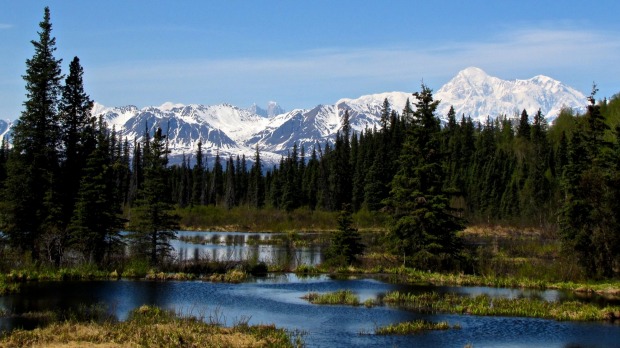
Ever since William Seward purchased Alaska from the Russians in 1867 – at the bargain price of two cents an acre – the dramatic north-west of America has captured the imagination of people around the world, thanks to Jack London, huskies and gold.
But there is another champion to whom we owe much. Vast swathes of Alaska's wilderness survive in pristine trim thanks to former US President Jimmy Carter's Alaska lands act of 1980. At the time the bill fired white-hot tensions in the 49th state and in Congress, talk of secession and near riot in one place, and effigies of Carter were burnt in the streets. But the bill passed into law. The act designated more than 40 million hectares of parks and wild-life refuges, putting vast tracts of land beyond the reach of developers, miners, self-styled frontiersmen and wilderness prophets, and turning Alaska into a tourist mecca for all kinds of travellers from grey nomads in their RVs to backcountry hikers loaded up with knapsacks and bear spray.
So here we are, in Seward, a quiet little town on the Kenai Peninsula south of Anchorage. It's a wilderness expanse of mountains, icefields, glaciers, fjords and ink-blue glaciated lakes. It's roughly the size of Belgium, and much of it is national park, thank you Jimmy.
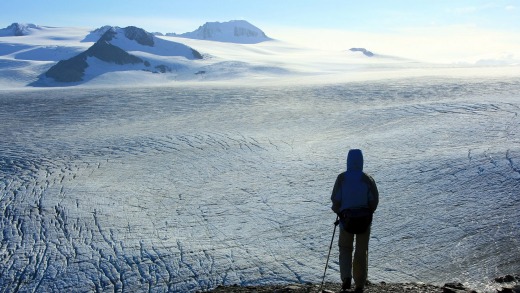
We drive to a point near the terminus of the Exit Glacier. Our trek starts on the valley floor. The trail winds through dense stands of cottonwood and alder that now inhabit the retreating glacier's alluvial plain. Then we climb, about six kilometres of switchback to heather-filled meadows and Arctic tundra, home to the marmot, and finally to magnificent views of the Harding Icefield, a blasted white expanse amid the sheer stone aspects of mountain peaks. But at any point on the upper reaches you can take in the awesome sight of the glacier, the mysterious blue of the fathomless crevasses, misty glimpses of lacy cascades across the valley and the braids of milky-blue meltwater in the Resurrection River far below.
Next day we seek out the spectacular coastline of the Kenai. We take a ferry from Seward to the Aialik Peninsula, deep into the fjord called Aialik Bay, to the glacier of the same name. The snow-capped mountains to port seem to rise straight up from the sea, their slopes thickly forested with sitka spruce and western hemlock. A pod of dall's porpoise cavort on the bough waves, sea otters laze on tumbledown at the water's edge, a whale breaches nearby and we pause as we round Aialik Cape to watch (and to smell) a colony of steller sealions sunning themselves on a rocky outcrop.
At the Aialik Glacier our captain cuts off the engines and we glide into a natural amphitheatre flanked by mountains and crowded with couch-sized icebergs and sea otters lazing on their backs, chewing on catch. The air is chill, the silence comes in brief snatches as the glacier grinds and bangs (like cannon) and periodically a great chunk of ice splits off the face, crashing into the bay.
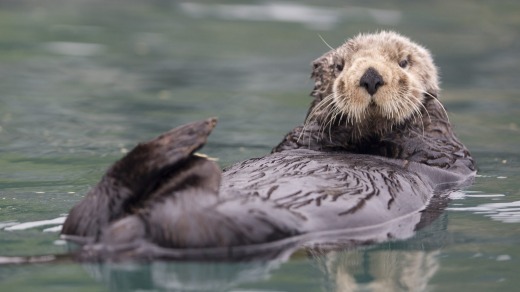
On day four we drive to the little port town of Whittier and from there we take the state ferry across Prince William Sound, a six-hour cruise to Valdez, the dappled face of the Chugach Mountains to the north, the peaks shrouded in cloud, the glaciers pressing down from ancient ice-fields, some flowing all the way to the Sound, others calving into remote fjords. On the upper deck some of us sun-bake, others scan the waters for the local residents – orca and humpback whales, otters and sealions – and the coast for the black bear.
Valdez is an oil town by the waters of the sound, the harbour cradled by some of the highest coastal mountains in the world. It's a pretty setting for a port which is the terminus for the Trans-Alaska Pipeline from the north. The town was rebuilt after the 1964 earthquake and is still recovering from the Exxon Valdez oil spill of 1989. A small museum houses an oil-spill gallery and a compelling video tells of the ruin and the heartache, and the unfinished recovery.
After breakfast we take a water taxi down the Valdez Arm to the mouth of Shoup Bay. We haul our kayaks and gear off the boat and kit up and then paddle about seven kilometres to the inner sanctum of the Bay to the toe of the Shoup Glacier, the shoulders piled up with lateral moraine. A huge cave has formed at the base and meltwater pours out, cascading over a scattering of bergs. On the return paddle we detour to a rock face to see the largest black-legged kittiwake rookery in the sound. We press on, hurriedly, to beat a fierce incoming tide.
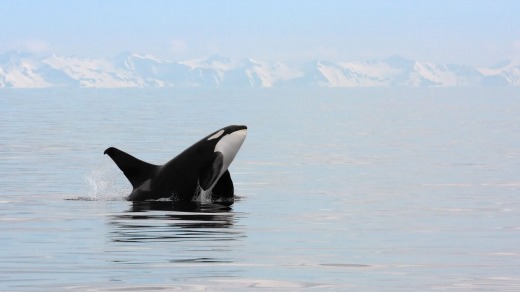
Next stop is the tiny town of Chitina on the banks of the Copper River. From there we take a bush flight in a little Cessna through the Wrangell Mountains.
The Wrangell and St Elias mountain chain forms a sweeping arc of towering peaks and glacial valleys, some 800 kilometres long. The chain is now gazetted as national park – yes, Jimmy, yet again – and we are frequently told "it's six times the size of Yellowstone". And it is. This is a vast absolute wilderness and you sense it as you fly through, the little plane dwarfed by the peaks and ridges, moose grazing in glacial ponds, a miners' ruin perched on the edge of nothing, a black bear chasing dall sheep up a talus slope.
The long-abandoned Kennicott Copper Mill – another Eureka story – is now the Kennicott Glacier Lodge and from here we head out the next day to walk on a vast river of ice called the Root Glacier. This one has retreated up the valley and dropped some 50 metres in height over 80 years, so we must first trek upon the rubbly moraine for some six kilometres to reach the icy toe. We don the crampons and head out on the white expanse. We are walking on more than 100 metres of ancient ice, still grinding and cutting below, the crevasses and the plumbing so deep and dangerous there's "no body recovery" says our guide, should you slip in. You can hear the glacier; you can see the pellucid blue meltwaters cascading down narrow chutes to these icy dungeons. "Everything flows, nothing stands still," as Heraclitus once said.
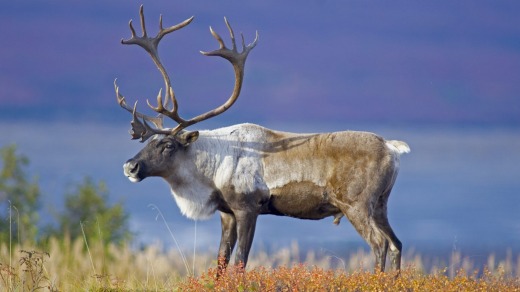
Late in the afternoon we return, rest up, and then take a guided tour of the copper-mill town. Why not, there's 15 hours of daylight here in autumn. The old mill is perched on the mountain side and the tour is worth it for the stunning views at the top and the astonishing story of perhaps the richest lode of copper ever to come out of the ground.
We fly back to Chitina and then drive west to Palmer and Wasilla ('Where's Sarah?') and north to our digs at Grizzly Lodge on the Nenana River. The lodge is on the outskirts of the Denali Wilderness, a 2.4 million-hectare national park and there's just one pencil thin road, 150 kilometres to the wild heart, a place called Kantishna. We bus into Denali with daytrippers (like us) and hikers loaded up with backpacks, camping gear and the obligatory bear spray. The autumn colours have arrived, the tundra shimmering with the yellows and golds of the turning leaves and the vibrant reds and magentas of blueberries and bearberries, the pantry that keeps the bears busily munching away, readying for winter. In fact, there's busy-ness all round. We pass through non-stop zones clearly marked: "Moose rutting next five miles".
We spot caribou on the move and brown bears young and old and then we see them fade into the white haze of a snow fall and our view of Mount McKinley, America's tallest mountain fades with it. McKinley is not as tall as Everest, but we get the message frequently told – measured from base camp to peak, McKinley is taller by some 300 metres.
Next day the weather picks up, just in time for a few hours of white-water rafting down the Nenana River and then a hearty dinner at the Salmon Bake in Glitter Gulch (irony). We stay up late hoping for a glimpse of the northern lights but the cloud cover does not favour us and we are hardly expecting the radiant day that follows. A perfect day for the train ride back to Anchorage, an endless panorama of fast-flowing creeks and rivers, pristine lakes, and cottonwood forests and distant mountains and now and then another glimpse of the monumental McKinley, far off.
Alaska combines the most stunning visual experience with geology that comes alive. In geological terms the country is relatively young and still active. Here the accelerated motion of ice and stone can bring perceptible change in a generation. Three hundred years ago the indigenous peoples along the Alaskan coast watched as advancing glaciers overtook their homes. Today we watch as glacial retreat returns life to a scoured landscape framed by a vastness of mountains, icefields and glacial flows.
Walking on glaciers or trekking their mountain flanks or kayaking to the toe of some mighty river of ice, you can see and hear it happening. Glaciers are nature's civil engineers. Come in autumn. Get all this and the colours too. The glaciers probably won't disappear in the next 100 years but in all likelihood they will continue to retreat and make large contributions to rising sea levels.
TRIP NOTES
MORE INFORMATION
travelalaska.com
GETTING THERE
Several international carriers including Alaska Air and United Airlines fly regularly to Alaska; Anchorage, Fairbanks and Juneau are the main points of entry. Check websites for best fares and routes to suit. Australians require an ESTA visa through the US government website, see esta.cbp.dhs.gov/esta.
THE PACKAGE
"The Dramatic North West" with World Expeditions is an 11-day/12-night hotel/lodge/cabin trip that runs from June to September. Cost is from $5240 per person. See worldexpeditions.com.au
The writer travelled as a guest of World Expeditions.